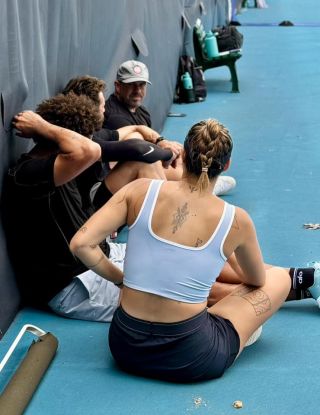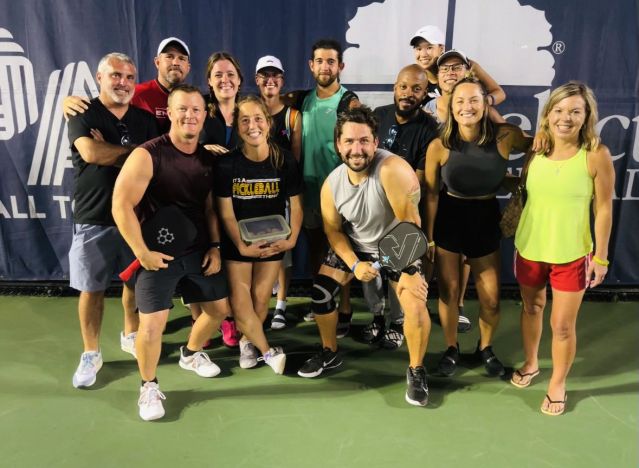
People were lonely and divided, and the onset of the COVID-19 pandemic only exacerbated these concerns. During this time, many people forgot how to talk to each other, care about the health and well-being of their larger communities, and even leave their own homes without high levels of anxiety and fear. Then came a bright yellow wiffle ball and a sport with a peculiar name: Pickleball.
The rapid rise in pickleball participation is due at least in part to the COVID-19 pandemic (Gupta, 2024). When most communities faced closures of schools and universities, bars and restaurants, and community and fitness centers, the pickleball courts remained open (and rapidly expanded). The sport of pickleball allowed us to bring all of our identities, insecurities, and social awkwardness onto the courts and relearn how to truly be with each other. Instead of grabbing the drink that we always talked about but never seemed to get, people started grabbing “dinks” together multiple days a week.
Research has indicated that pickleball participation improves several social and emotional health indicators. While it has long been recognized that pickleball participation reduces loneliness among the elderly adult population, a more recent systematic review of the benefits of pickleball on mental health revealed significant improvements in personal well-being, life satisfaction, depression, stress, and happiness among adult players of all ages (Cerezueal and colleagues, 2023). Once perceived as a sport solely for the elderly, playing pickleball has also improved coping, focus, ability to make friends, and mood among young players ages 8 to 18 years old specifically (Caldarella and colleagues, 2023). Thus, it has become evident that the social and emotional benefits of pickleball have transcended demographics.

In my own experience on the courts, I have witnessed women, men, and gender-diverse people partner with and against each other on recreational courts without controversy. I have seen players of all ages, racial backgrounds, and levels of financial security tap paddles between games at high-level tournaments. More and more women in my life have stayed out of the kitchen and won epic hand battles against men who would have picked them last in middle school gym class. Athletes of all physical and mental abilities have stacked paddles together at open play to compete against each other in a sport that is inherently inclusive and accessible.
During a time when the nation was suffering (and continues to recover) from the COVID-19 pandemic and other sources of the social and political divide, the sport of pickleball showed us how to genuinely prioritize the health and safety of others and rebuild community with those we may not have interacted with otherwise. While in the end, it will take a lot more than a bright yellow wiffle ball to heal the wounds of loneliness and divide, grabbing a dink together has proven to be a pretty stellar start.

This post was inspired by a post-pickleball lunchtime conversation between members of the Nashville Pickleball Club, who you see photographed here.
